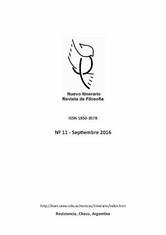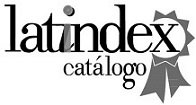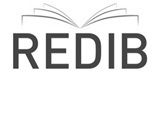Understanding Better by Explaining More: Neuroscience and Narrativity
DOI:
https://doi.org/10.30972/nvt.2017591Keywords:
Ricoeur, Neuro-narrative, Neuroscience, Hermeneutics, IdentityAbstract
In the dialogue between Paul Ricoeur and Jean-Pierre Changeux, published as "La naturaleza y la norma" (2001), they discussed the relationship between narrative, neuroscience, and philosophy. Ricoeur argues for a semantic dualism that separates discourses on the brain and the lived body, while Changeux seeks an intersection between the two. Although a definitive connection between narrative knowledge and neuronal processes has not yet been achieved, explanatory modeling enriches our understanding of the narrative phenomenon. Ricoeur maintains that narrative is fundamental to the formation of personal identity, arguing that it is constructed through stories about oneself. However, he acknowledges that these stories are not entirely controlled by the individual but are influenced by various factors. We will briefly review the pillars of Ricoeur's narrative theory to highlight their correspondence with current research interests in the field of neuroscience. Likewise, we will explore certain works dedicated to narrative theory from the neuroscience perspective over the past decade, in order to update the state of the art and renew the dialogue between hermeneutics and "neuro-narrative". We will show that the adoption by neurobiology of the vocabulary as well as the interests of certain philosophical and literary humanisms, on the one hand, reshapes the expectations of neuroscience and, on the other hand, tends towards interdisciplinarity. Narratology and neuroscience find points of convergence in narrative cognition, which emerges from neurobiological processes and is incompatible with a static and inflexible view of the human being. The connection between the neurophysiological level and the philosophical level allows for a broader and deeper interpretation of human experience and the formation of personal identity. All in all, the dialogue between narrative, neuroscience, and philosophy reveals the complexity of human beings and their identity, emphasizing the importance of an interdisciplinary perspective to address these issues. Although there are still challenges to establishing a definitive connection between narrative knowledge and neuronal processes, links have been identified that enrich our understanding of the narrative phenomenon and the formation of personal identity. In conclusion, we will suggest that it makes no sense in this current context, more than twenty years after the dialogue between Ricoeur and Changeux, to uphold any kind of dualism.
References
Begué, M. F. (2002). Paul Ricoeur: la poética del sí-mismo. Buenos Aires: Biblos.
Beraldi, G. (2022). Figuras de la textualidad. Hacia una lectura neobarroca de las imágenes. Hipogrifo, 10(2), 51-75. doi: http://dx.doi.org/10.13035/H.2022.10.02.05
Changeux, J. P., & Ricoeur, P. (2001). La naturaleza y la norma. Lo que nos hace pensar. México: Fondo de Cultura Económica.
Coole, D. (2007). Merleau-Ponty and Modern Politics after Anti-Humanism. Lanham MD: Rowman & Littlefield Publishers.
Eastwood, C. (Dirección). (2004). Million Dollar Baby [Película]. Estados Unidos.
Farmasi, L. (2023). Narrative, Perception, and the Embodied Mind: Towards a Neuro-Narratology. New York: Routledge.
Gallese, V., & Wojciehowski, H. (2011). How Stories Make Us Feel: Toward an Embodied Narratology. California Italian Studies, 2(1). doi: https://doi.org/10.5070/C321008974
García Romero, M. (2015). A ciascun'alma presa, e gentil core. El universo amoroso de Dante a través del primer soneto de la Vita Nuova. VII Congreso virtual sobre Historia de las Mujeres (págs. 235-262). Archivo Histórico Diocesano de Jaén. Obtenido de https://www.revistacodice.es/publi_virtuales/vii_congreso_mujeres/comunicaciones/14_MARIA_DEL_CASTILLO_GARCIA.pdf
Gómez Pedrido, M. (2018). El a-priori temporal de la libertad y la preteridad trascendente del mundo. (A. Bertorello, & L. Basso, Edits.) Studia Heideggeriana. Espacio y Tiempo, VII, 47-72. Obtenido de https://www.teseopress.com/studiaheideggerianavii/
[INA.fr]. (2023, June 4). Paul Ricoeur, un philosophe dans la cité - 1995 [Video]. Facebook.com. https://fb.watch/s3veHNltu9/
Jääskeläinen, I., Klucharev, V., Panidi, K., & Shestakova, A. (26 de junio de 2020). Neural Processing of Narratives: From Individual Processing to Viral Propagation. Frontiers in Human Neuroscience, 14, 1-9. doi: https://doi.org/10.3389/fnhum.2020.00253
Jangraw, D., Finn, E., Bandettini, P., Landi, N., Sun, H., Fumiko, H., . . . Molfese, P. (2023). Inter-subject Correlation during Long Narratives Reveals Widespread Neural Correlates of Reading Ability. NeuroImage, 282. doi: https://doi.org/10.1016/j.neuroimage.2023.120390
Macon, C. (2013). Sentimus ergo sumus. El surgimiento del "giro afectivo" y su impacto sobre la filosofía política. RLFP, II(6), 1-32.
Ricoeur, P. (1983). Tiempo y narración I. Buenos Aires, Argentina: Siglo XXI editores.
Ricoeur, P. (1985). Tiempo y narración III. México: Siglo veintiuno editores.
Ricoeur, P. (1996). Sí mismo como otro. México: Siglo veintiuno editores.
Ricoeur, P. (2001). La metáfora viva (2da ed.). (A. Neira, Trad.) Madrid: Trotta - Ediciones Cristiandad.
Ricoeur, P. (2010). Del texto a la acción. Buenos Aires: Fondo de Cultura Económica.
Ricoeur, P. (2024). Lectures on Imagination. (R. Sweeney, J.-L. Amalric, P. Crosby, & G. Taylor, Edits.) University of Chicago Press.
Virno, P. (2013). Y así sucesivamente, al infinito. (L. López Padilla, Trad.) Fondo de Cultura Económica.
Vultur, I. (2021). Paul Ricœur et la narratologie: un dialogue croisé. (LIRCES, Ed.) Cahiers de Narratologie, 39, 1-16. doi: https://doi.org/10.4000/narratologie.12073
Walker, M. J. (2012). Neuroscience, Self-Understanding, and Narrative Truth. AJOB Neuroscience, 3(4), 63-74. doi: https://doi.org/10.1080/21507740.2012.712603
Zak, P. J. (2015). Why Inspiring Stories Make Us React: The Neuroscience of Narrative. Cerebrum, 1-13.
Zak, P., Kurzban, R., & Matzner, W. (2005). Oxytocin is Associated with Human Trustworthiness. Hormones and Behavior, 48, 522-527.
Published
Versions
- 2024-09-18 (2)
- 2024-06-28 (1)
How to Cite
Issue
Section
License

This work is licensed under a Creative Commons Attribution-NonCommercial 4.0 International License.
Les autores ceden a Nuevo Itinerario los derechos de publicidad de sus trabajos, toda vez que hayan sido admitidos como parte de alguno de sus números. Ello no obstante, les autores retienen los derechos de propiedad intelectual y responsabilidad ética así como la posibilidad de dar difusión propia por los medios que consideren.












51.jpg)

